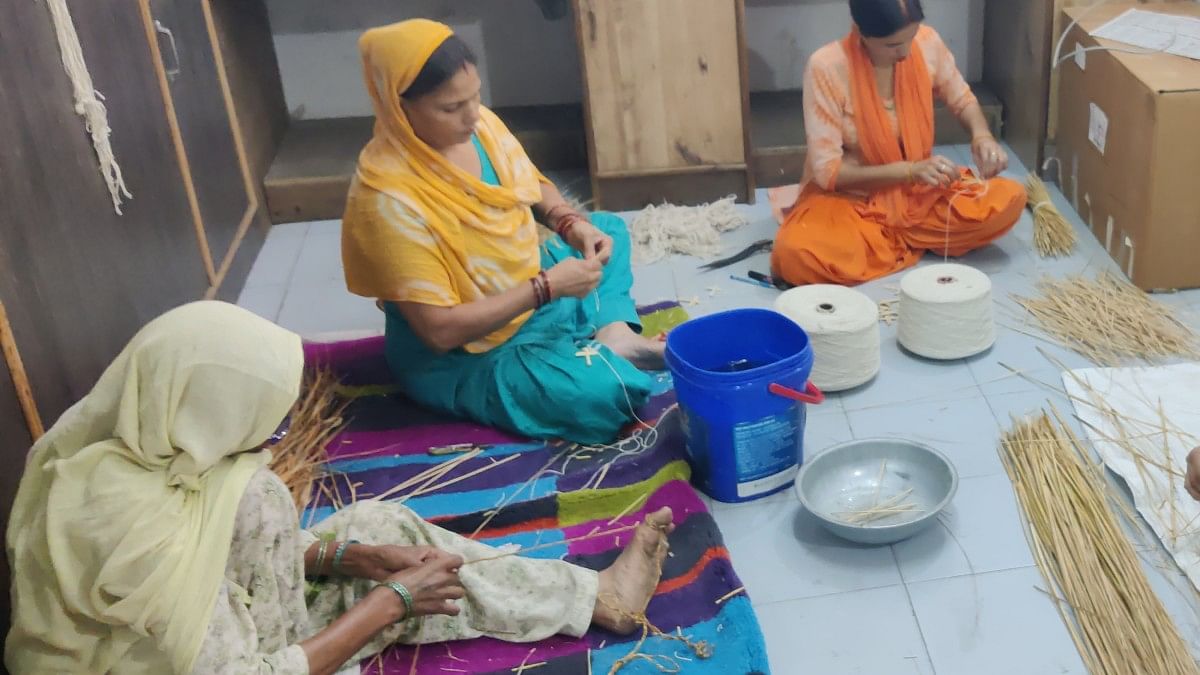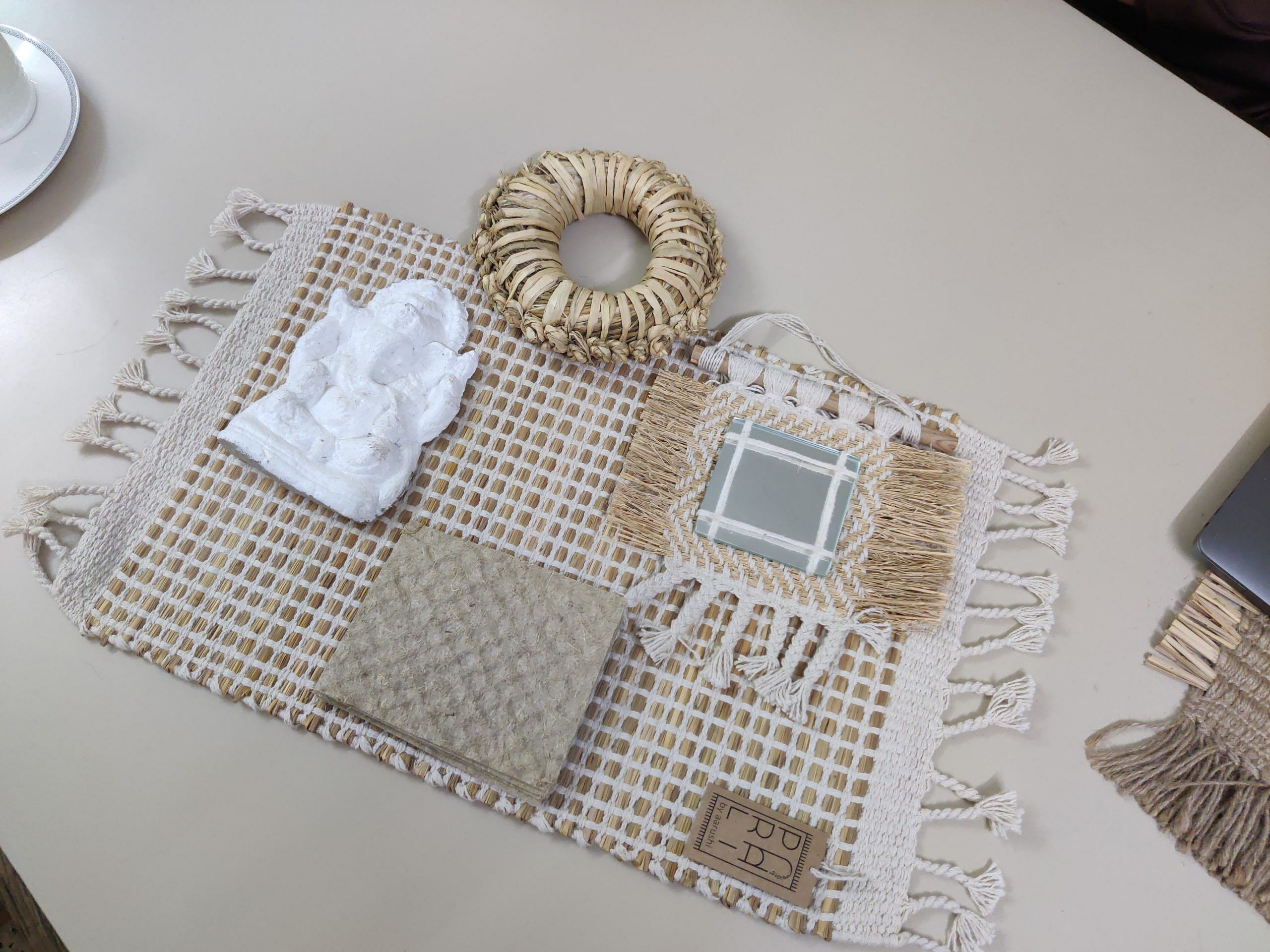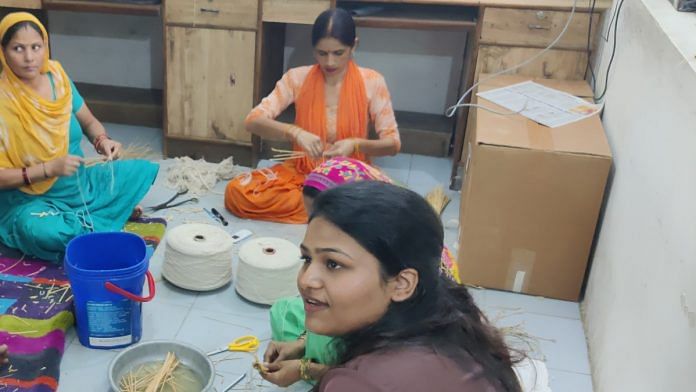Panipat, Haryana: It is 11 am, and a relentless late-morning sun beats down upon the streets of Babarpur, a village on the outskirts of Panipat, Haryana. In one corner of the village, a small group of women is busy crafting earrings, coasters, table mats, wall hangings, and even rugs and fabric for home furnishing.
From a distance, these look like any other handicraft items. A closer look, however, reveals why they are unique. The items are made of parali, or stubble.
The cut stalks of cereals left after the grain is harvested, stubble has been a subject of much controversy, and politics, over the past few years. Stubble burning — the practice of setting stubble on fire to clear the fields for the next sowing season — that’s rampant in Punjab and Haryana, has been seen as one of the primary contributors to Delhi’s severe pollution problem.
Data from ICAR-Indian Agricultural Research Institute shows that Punjab and Haryana together reported 35,714 incidents of stubble fires between 15 September and 8 November this year. Of this, Punjab alone contributed to 33,090 incidents.
For Aarushi Mittal, a young entrepreneur from Panipat who started ‘Parali by Aarushi’, the rising pollution levels made her want to do something to bring change. That was in 2019, while she was still studying for her master’s degree in textile design in the UK.
“My family and I were having a discussion about air pollution and I thought of exploring this material [stubble] to give [sic] back to my roots. I started working on this as part of my thesis in 2019 and then gradually explored the commercial side of it,” 26-year-old Aarush Mittal told ThePrint.

‘Parali by Aarushi’ is a result of three years of research. Set up in September in Babarpur, Mittal currently employs six women from the same village to turn stubble into home décor items.
“There’s a story behind the design of each product,” Mittal said to ThePrint as she held out one of her table mats. “If glass is used in a product, it is to depict the water used in paddy fields. Like water reflects the sky, the glass (used in this product) also shows you a reflection,” she explained.
Once the idea was conceived, Mittal began experimenting with stubble during the Covid-induced lockdown by making different products out of it. However, the pandemic delayed her business plans, until this year.
Also Read: This village in Jalandhar is 100% stubble burning free & setting an example for all of Punjab
Waste to wealth
So what does it take to turn straws into works of art? A lot of effort and ingenuity, it turns out.
Mittal explained the process. First, stacks of stubble are cleaned and segregated. One stack is then woven into rugs, table mats, and fabrics, while another goes to make other products, such as earrings.
According to Mittal, no part of the stubble straw goes waste — while the upper stalk is used to make lighter handicraft items like wall hangings, the thicker middle part is used to make rugs and mats.
What remains of the stubble is combined with things like clay to make beads and miniature statues. “The leftovers are also used to make paper, cardboard, etc. So nothing is actually wasted,” Mittal added.
The women employed at Parali by Aarushi are all trained by her.
“I’m training women of the village to teach them some kind of skill. These women have worked in fields before.”
Mamta Tomar is among the team of women working with Mittal. ”We’ve learnt it all from Aarushi didi. Sometimes it’s right, sometimes it’s wrong, but eventually we learn how to make it,” a proud-looking Tomar told ThePrint.
“We feel good while making this,” Manju Tomar, another employee at Parali by Aarushi, said while others smiled and nodded in agreement.
A pair of earrings by Parali by Aarushi cost Rs 60, a set of coasters Rs 500, and a table mat Rs 800.

She weaves in organic cotton yarns along with the stubble to maintain the integrity of her products.
“Organic cotton is nearly four times more expensive than ordinary cotton. But it’s good for the environment, though the product is the same. There are no pesticides or insecticides used,” said Mittal.
Steep costs
However, it’s not all smooth sailing — there are challenges to contend with even before production begins.
Trouble begins at the procurement stage itself, Mittal said. Stubble — crop residue that farmers generally consider waste— could cost Mittal anywhere between Rs 350 to Rs 650 per quintal. She also frequently faces problems convincing farmers to sell her stubble.
“Many farmers just don’t understand what upcycling means. They are sceptical of what we’re going to use it (stubble) for and so they sell at high rates. Many of them are even ready to burn it instead of selling it to us,” she told ThePrint, adding that while she could simply have it picked up from farmers, she’s “buying it because we really wanted people to see value in this residue”.
“It’s not waste, it’s a resource and we are trying to use it as a resource,” she said.
Ghar, ghar parali
Currently, Mittal’s trade is primarily through exhibitions, although her business-to-business sales — that is, offers that she gets from business houses — are picking up.
Her work has also found appreciation among handicraft experts, she told ThePrint.
“I want to see parali in every house, every set-up,” she said. “Like bamboo is seen as a resource, I want parali to also be seen as a resource and not as waste.”
(Edited by Uttara Ramaswamy)
Also Read: ‘No other option’ — as its fields turn black & skies smoky, why Punjab won’t stop burning stubble






